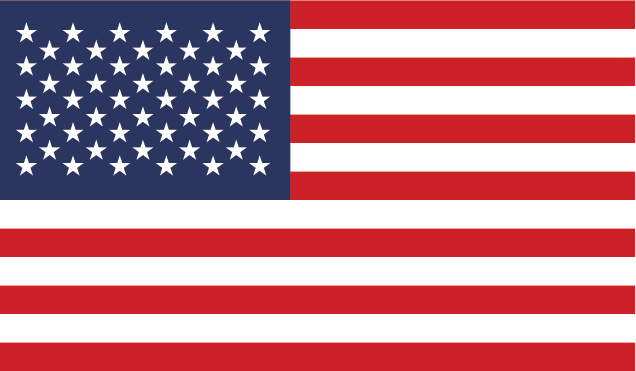Fish and chips is a hearty classic that has dominated England's culinary scene for more than a century. It is crispy, golden, and distinctly British. This popular dish, which consists of flaky white fish coated in a crunchy beer batter and served with thick-cut chips (fries), is best enjoyed hot with a side of mushy peas, a dollop of tartar sauce, and a splash of malt vinegar. Fish and chips is more than just a meal; it's a salty, filling bite of English tradition, whether it's served plated in a pub or wrapped in paper from a seaside chippy. Read More...
Fish and Chips -The Delicious Tale Behind England’s National Dish:
Few foods are as deeply woven into the fabric of English identity as fish and chips. With its crackling golden batter, thick potato chips, and tangy vinegar drizzle, this iconic dish represents more than just a satisfying meal—it’s a piece of living history. Once a cheap staple of the working class, fish and chips rose to become a culinary emblem of British culture, served everywhere from seaside shacks to bustling city pubs. But how did this humble pairing of fried fish and potatoes become the national dish of England?
Two Origins, One Perfect Pairing:
Though now inseparable, fish and chips each arrived in England through different culinary routes. Fried fish was introduced by Sephardic Jewish immigrants in the 17th century, who settled in London’s East End. They brought with them a tradition of frying fish in oil, often coating it in a flour-based batter. This method closely resembles today’s technique of creating that crisp, golden shell that defines British fried fish.
Chips, on the other hand, are believed to have originated in either Belgium or France and made their way to Britain in the 18th century. Fried slices of potato quickly became a popular street food, especially in urban areas where people sought hot, filling meals on the go.
The brilliant idea to combine fried fish with chips is generally credited to the mid-19th century. Historians often name Joseph Malin, a Jewish immigrant in London, as the first to open a combined fish and chip shop around 1860. Simultaneously in the north of England, others like John Lees of Mossley, near Manchester, were also selling fish and chips from market stalls. Regardless of who did it first, the pairing proved wildly popular.
Working-Class Fuel and Wartime Hero:
By the late 1800s, fish and chip shops (chippies) had spread across England, especially in industrial towns like Manchester, Birmingham, and London. The dish was cheap, filling, and easy to eat by hand—perfect for workers coming off long factory shifts.
During World War I and II, fish and chips played a surprisingly patriotic role. While many foods were rationed, the British government ensured that fish and chips remained available to the public, viewing the meal as morale-boosting comfort food for soldiers and civilians alike. In fact, Winston Churchill famously referred to fish and chips as “the good companions” and made efforts to keep them off the ration list.
From Newspaper Wraps to National Pride:
Traditionally, fish and chips were served wrapped in newspaper, keeping them warm and adding a certain charm to the eating experience. While modern hygiene standards have replaced newsprint with plain paper or cardboard boxes, the nostalgic feel of grabbing a warm bundle of fish and chips remains deeply cherished in the UK.
Though international cuisine has surged in popularity across Britain in recent decades—think chicken tikka masala, kebabs, and ramen—fish and chips still holds firm as a national treasure, officially and culturally. Today, England is home to thousands of chippies, with regional variations (mushy peas in the north, curry sauce in the Midlands, pickled eggs in the south), all reflecting the dish’s adaptability and broad appeal.
A Dish That Endures:
Whether eaten by the sea with the salt air in your face or enjoyed on a rainy evening in London, fish and chips continues to capture the British spirit—unpretentious, comforting, and proudly traditional. It’s more than just battered fish and fried potatoes; it’s a plate of history, community, and national pride.
So next time you dip your chip or crack into that crispy coating, remember: you’re taking a bite out of one of England’s most enduring—and endearing—culinary stories.
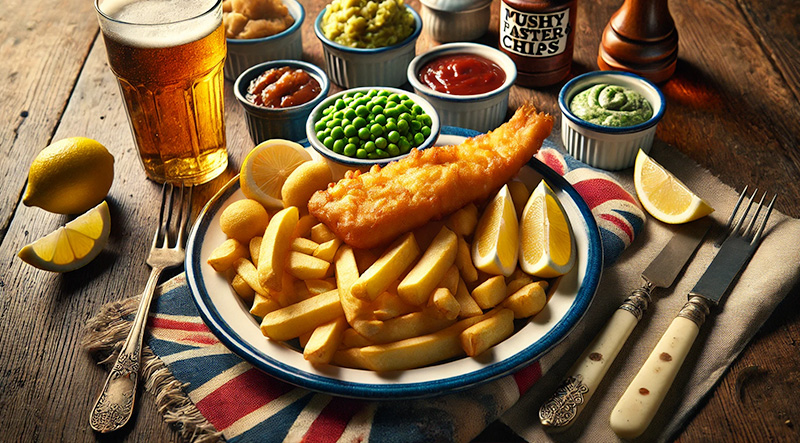
Prepare the Chips:
Parboil the Chips:
Make the Batter:
Prepare the Fish:
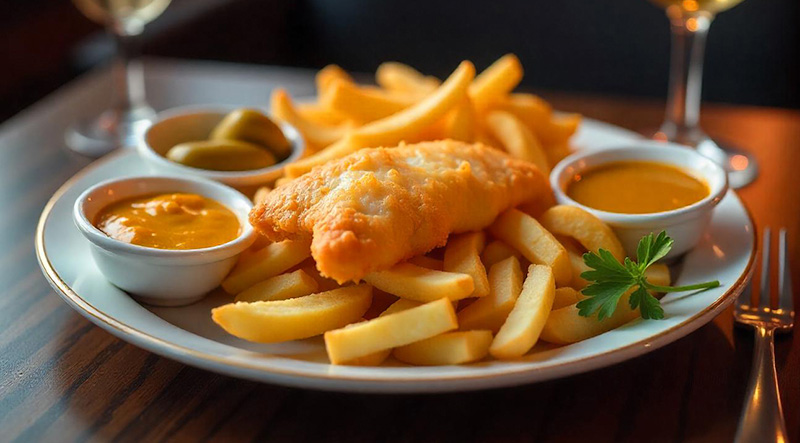
Heat the Oil for Frying:
Fry the Fish:
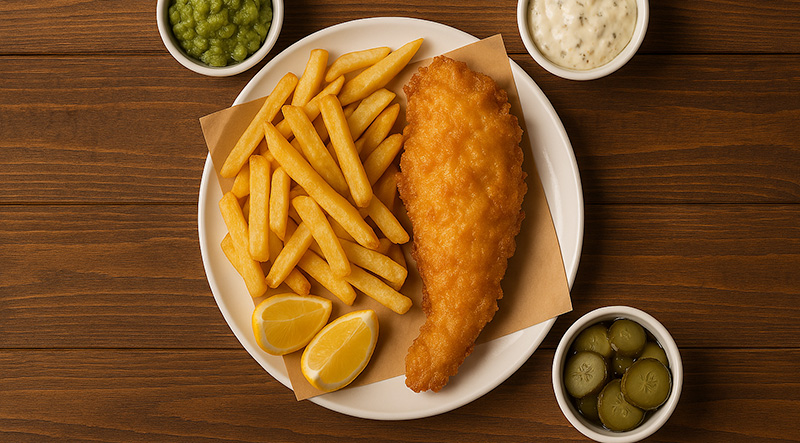
Finish the Chips:

Optional Sides:
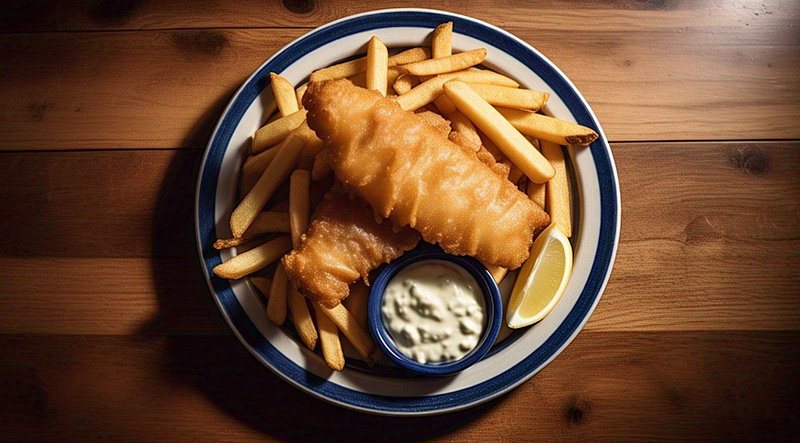
Serve:
Fish and chips is more than a meal—it’s a British institution. With a crisp batter, fluffy chips, and classic sides, this dish brings a bite of seaside tradition to your table.
The total preparation and cooking time for traditional **fish and chips** is approximately **1 hour and 15 minutes**. Preparing and cutting the potatoes into thick chips takes about 10–15 minutes, followed by an initial frying round to par-cook them for 5–6 minutes. While the chips cool, the batter can be mixed and chilled, and the fish fillets seasoned and floured—this takes another 10–15 minutes. Frying the fish in batches takes about 5–7 minutes each, and the final fry for the chips adds another 2–3 minutes per batch. Optional sides like mushy peas or tartar sauce can be made concurrently in about 10 minutes. With good kitchen multitasking, the dish can be completed from start to finish in just over an hour.
A single serving of traditional **fish and chips**, based on the recipe provided, contains approximately **700 to 900 calories**. The battered and deep-fried fish fillet contributes about **400–500 calories**, depending on the size of the fish and amount of oil absorbed during frying. A generous portion of double-fried chips (roughly one medium-large potato) adds around **250–350 calories**. Optional sides like **tartar sauce** (1 tablespoon adds \~70 calories), **mushy peas** (about 50–70 calories), and a splash of malt vinegar (minimal calories) can slightly raise the total. While hearty, the dish is a satisfying, protein-rich comfort meal that reflects its origins as classic English working-class fare.

